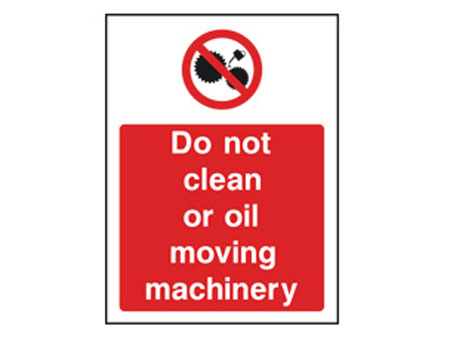Do I need consent for my outdoor advertisement?
Confused about consent for advertising and signs? Following on from our guidance on health and safety signs, in this two-part post, we’ll look at what you can display as an outdoor advertisement without obtaining consent.
So, you’re about to put up some advertising. You have your designs, you’ve picked a signmaker, you know where you want them displayed. Then your friend asks, ‘But are you allowed to do that? Aren’t there all sorts of rules and regulations about putting up adverts?’
Ah.
Unfortunately, your well-meaning friend is quite right. Outdoor advertising is regulated by a plethora of rules. Not only that, but they’re often really specific about the sizes of signs and what heights they can be displayed at. So before you just assume that your advertising will be fine, it’s best to do a little research.
Finding out more about consent for outdoor advertising
This post can point you in the right direction, but to get detailed advice, you’re going to need more guidance. We suggest:
- Consulting the official government guidelines. They’re really specific, and have lots of illustrative pictures.
- Contacting your local council. (for example, Wiltshire council). As most of these regulations are applied by them, you can get the answer from the horse’s mouth.
- A local signmaker. They will know what’s what for many signage-related regulations. For example, we’ve heard of this excellent signmaker in Warminster. 🙂
The main principles
As we mentioned above, there is an awful lot of detail in the regulations, covering each and every eventuality. However, some general principles may help.
If you’re confused about whether your sign is regarded as an example of ‘advertising’, the short answer is ‘it probably is.’ For the purposes of government guidelines, posters, notices, estate agents’ boards, town name-signs and price stickers – to name a few – all count as ‘advertising’.
There are five rules every sort of outdoor advertising must follow. The signs (or other advertising) must:
- be kept clean and tidy
- be kept in a safe condition
- have the permission of the owner of the site on which they are displayed
- not obscure, or hinder the interpretation of, official road, rail, waterway or aircraft signs
- be removed carefully where so required by the planning authority.
Two further important points. Regarding permission, ‘ownership’ includes the Highway Authority – worth considering if you’re planning a roadside sign. Secondly, signs must not make using the types of transport that are listed become ‘more hazardous’. You might fall foul of this clause if – for example – you were planning a large and potentially distracting sign near a junction.
What types of sign don’t require consent?
 There are two conditions under which you don’t need to obtain any consent for your outdoor advertising:
There are two conditions under which you don’t need to obtain any consent for your outdoor advertising:
- If the advertising is excluded from direct control of the planning authority
- If the advertising meets the criteria for ‘deemed consent’.
Exemption from direct control
There are nine categories of sign that don’t require any consent. As this post is about outdoor signs, we need only mention eight:
- Advertisements displayed on enclosed land e.g. in a railway station forecourt, sports stadium or shopping mall.
- Advertisements displayed on or in a vehicle or vessel that’s normally moving e.g. on buses, vans etc.
- Advertisements which form part of a building’s fabric e.g. as part of the stonework.
- Price tickets, markers and trade-names displayed on branded goods, petrol pumps or vending machines. However, these can’t be illuminated or exceed 0.1 metres square.
- Advertisements relating specifically to pending elections – including Parliamentary, European Parliamentary, or local government – and referenda. These can’t be displayed more than 14 days after the poll closes.
- Advertisements required to be displayed by Parliamentary Order or enactment.
- Traffic signs, as defined by the Road Traffic Regulation Act 1984).
- National, county and saints’ flags, as well as EU and Commonwealth flags. Note that to preserve exemption, no advertising material can be incorporated into the flag.
Essentially, provided you’re meeting the five general rules set out in the ‘main principles’ section, you’re good to go.
One exception might be if you’re advertising within places that are, ‘especially vulnerable to the visual effects of outdoor advertisements.’ In this case, planning authorities can exert special powers that give them greater control.
In part two, we will look at the second group of outdoor advertising that you don’t need planning consent for – those falling under the categories of ‘deemed consent’. Stay tuned!
Comments
Archives
- June 2020 (2)
- May 2020 (1)
- April 2020 (1)
- March 2020 (1)
- February 2020 (1)
- January 2020 (1)
- December 2019 (1)
- November 2019 (1)
- October 2019 (1)
- September 2019 (1)
- August 2019 (3)
- July 2019 (1)
- June 2019 (1)
- May 2019 (1)
- April 2019 (1)
- March 2019 (1)
- February 2019 (1)
- January 2019 (1)
- December 2018 (1)
- November 2018 (1)
- October 2018 (1)
- September 2018 (1)
- August 2018 (1)
- July 2018 (1)
- June 2018 (1)
- May 2018 (1)
- April 2018 (1)
- March 2018 (1)
- February 2018 (1)
- January 2018 (1)
- December 2017 (1)
- November 2017 (1)
- October 2017 (1)
- September 2017 (1)
- August 2017 (1)
- July 2017 (1)
- June 2017 (2)
- April 2017 (1)
- March 2017 (1)
- February 2017 (1)
- January 2017 (1)
- December 2016 (1)
- November 2016 (1)
- October 2016 (1)
- September 2016 (1)
- August 2016 (1)
- September 2015 (1)
- February 2015 (1)
- December 2014 (2)
- August 2014 (3)
- July 2014 (1)
- January 2014 (1)
- December 2013 (4)






Comments are closed.